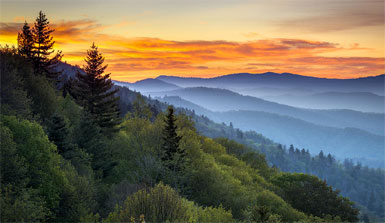In addition to renewable energy gaining five more years of federal support, some of our most important conservation programs were funded as part of the Omnibus bill – in exchange for Republicans’ priority of lifting the oil export ban.
Land and Water Conservation Fund
"For 50 years, the Land and Water Conservation Fund has kept a simple promise to the American people: when we allow offshore drilling for oil and gas that belongs to all of us, we set aside a small portion of the proceeds to protect America’s greatest places," says the Land and Water Conservation Fund Coalition.
Nearly five million acres have been protected, creating our most treasured natural areas, such as Grand Canyon, Great Smoky Mountains and Rocky Mountain national parks, White Mountain National Forest, Appalachian Trail, and national forests, wildlife refuges, rivers, lakes and community parks across the US.

While it is supposed to receive $900 million a year, the funds are never certain. Much of the money gets diverted to other programs Congress needs to fund, and this year, Republicans allowed this bedrock conservation program to expire for the first time ever.
The accumulated backlog for federal acquisition has grown to about $30 billion, resulting in the loss of many special places to development.
The Fund deserves permanent renewal at full funding levels, but the Omnibus reinstates it for just three years and at half its historic funding level.
Conservation Easements
After also letting this program expire, Congress stepped up and permanently protected the other major way we preserve land in the US – through local land trusts.
The tax deduction property owners get when they place a conservation easement on their land, preserving it in perpetuity – is now permanent.
"This is the single greatest legislative action in decades to support land conservation," says Rand Wentworth, President of the Land Trust Alliance.
First enacted in 2006, the incentive is directly responsible for conserving more than 2 million acres. Lands placed into conservation easements continue to be farmed, grazed or simply lived on until the owner dies.
The Conservation Easement Incentive Act advanced through Congress as part of the America Gives More Act, a package of tax incentives that encourages charitable giving.
Great Lakes Restoration Initiative
The budget includes $300 milllion to restore the Great Lake ecosystem – the largest surface fresh water system in the world. Funds support farmers in reducing runoff, halting the spread of invasive aquatic species like Asian Carp and restoring native species habitats. It also includes $1.39 billion for the Clean Water State Revolving Fund, of which $510 million goes to the Great Lakes to prevent sewage from contaminating beaches and drinking water.
"The new Great Lakes Restoration Initiative Action Plan lays out the steps that will get us closer to the day when all Great Lakes fish will be safe to eat, all beaches will be safe for swimmers and harmful algal blooms will not threaten our drinking water supplies," says EPA Administrator Gine McCarthy, calling it the largest conservation initiative in American history.
Last year, President Obama launched the Resilient Lands and Waters initiative as part of his Climate Action Plan to help our country adapt to climate change.
It focuses on four areas for special attention: the Great Lakes; Southwest Florida, including the Everglades; Hawaii’s coastal reefs and Puget Sound and the Snohomish River watershed in Washington.
Selected lands and waters face a wide range of climate impacts and ecological stressors: sea level rise, drought, wildfire, and invasive species. Federal agencies will work with state, tribal, and local partners to prepare for and prevent threats, and ensure long-term conservation efforts take climate change into account. The focus is also on conserving coastal wetlands and marine areas, protecting drinking water for urban areas, and providing habitat for wildlife.
In the Great Lakes, for example, a coastal wetland prioritization tool under development will guide efforts to where restoration is most needed.
"By investing in smart strategies for conserving and restoring our lands and waters, we can help make communities more resilient to climate impacts while slowing carbon emissions," says the White House. This "Climate and Natural Resources Priority Agenda represents a first of its kind, comprehensive commitment across the Federal Government to support resilience of our natural resources."
It will enhance our most important carbon sinks such as forests, grasslands, wetlands and coastal areas; promote green infrastructure where natural systems are part of community development and modernize federal programs, investments, and services to build resilience and enhance carbon storage.
Among the dozens of initiatives are:
- the first quantitative estimates on how much carbon is stored in the 20 million acres of land and water managed by the Army Corp of Engineers.
- NOAA’s Sea Grant Program will support over 300 projects to build resilient coastal communities.
- Restoring coastal salt marshes and estuaries such as Cape May in New Jersey and Galveston Bay in Texas.
Read the White House fact sheet:
